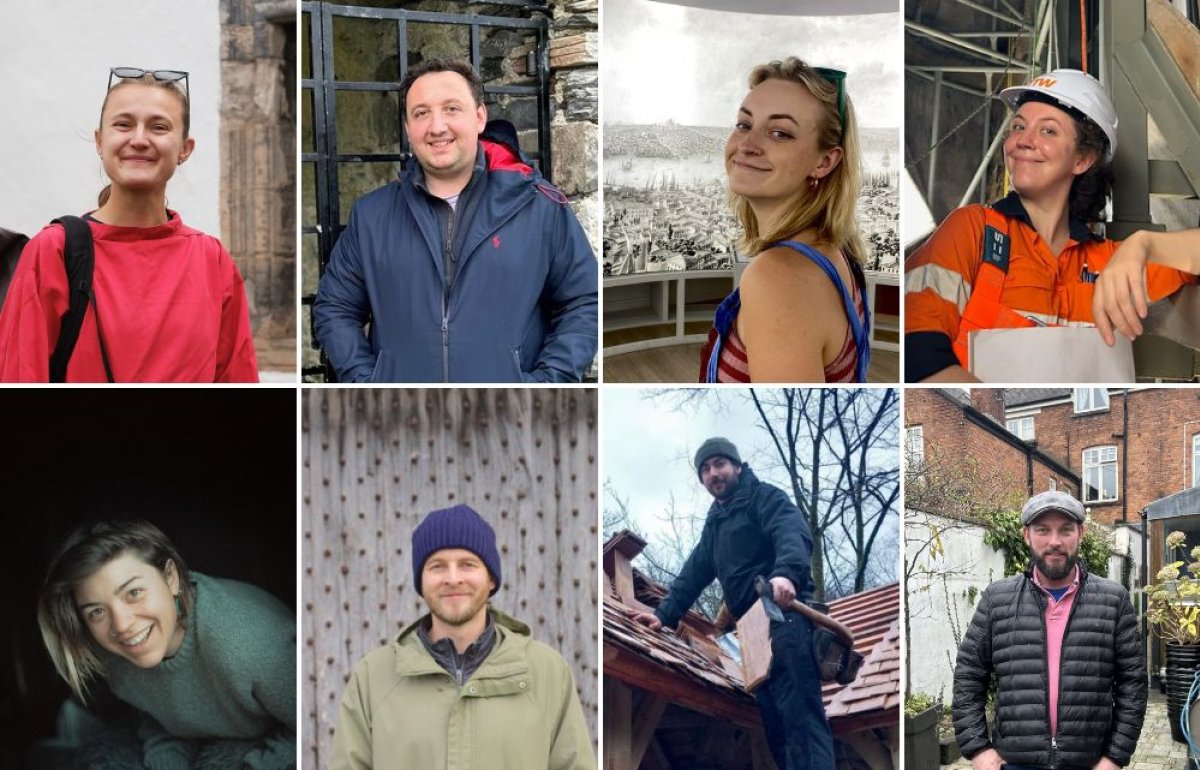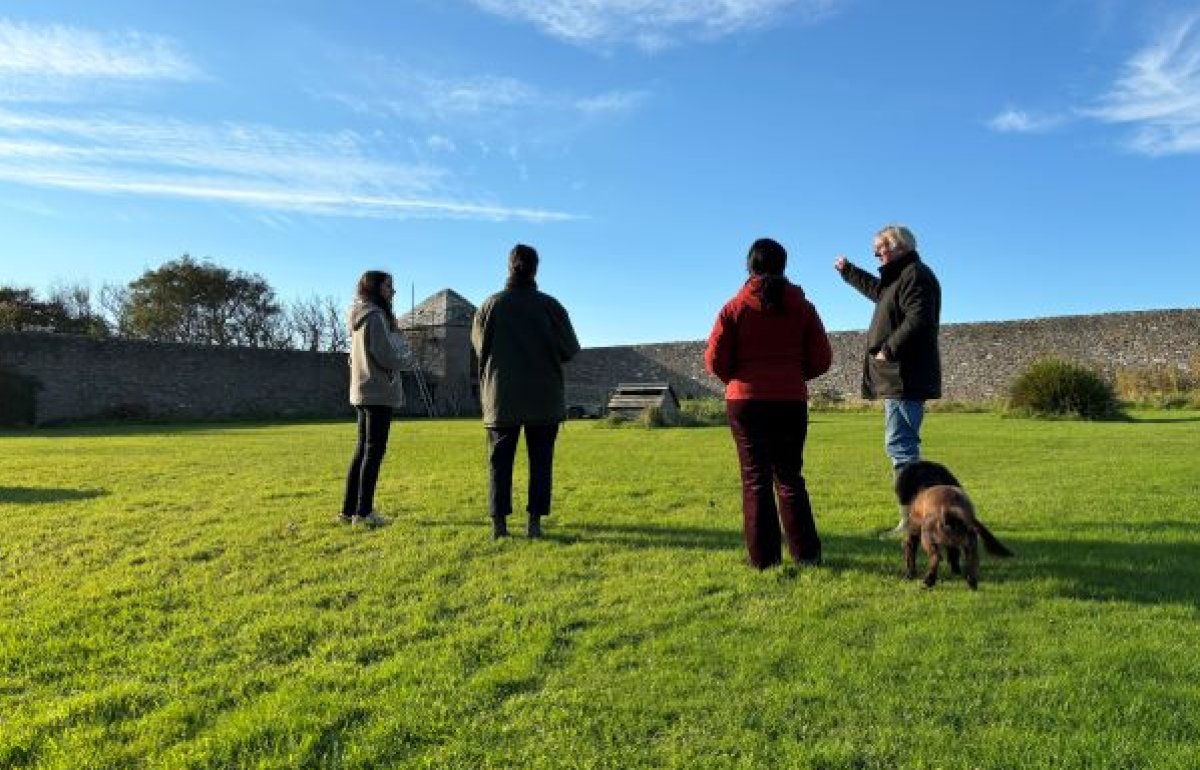
A Day in the Life of a Scholar: Getting Hands-on at Hop Pole Inn
Share on:
Chloe Chambers, 2024 SPAB Scholar, shares the highlights of a recent site visit – and what it's really like to plaster with cow dung!
This week, we’ve been staying in Limpley Stoke, close to Bath, with James Sibson, a conservation architect with Feilden Clegg Bradley Studios. James and his family have been so welcoming and made us feel right at home.
Yesterday, we spent a day in the Feilden Clegg Bradley Studios and saw some of the heritage projects they've worked on in Bath. This morning we had an unusually short journey to site, a quick stroll down the hill to the Hop Pole Inn.
The Hop Pole Inn is a community-owned pub which James has been involved with for a couple of years. It’s two storeys of beautiful golden Bath stone. James tells us that during works they've discovered that this is bed on pure earth mortars, with no lime, unusual for the area.
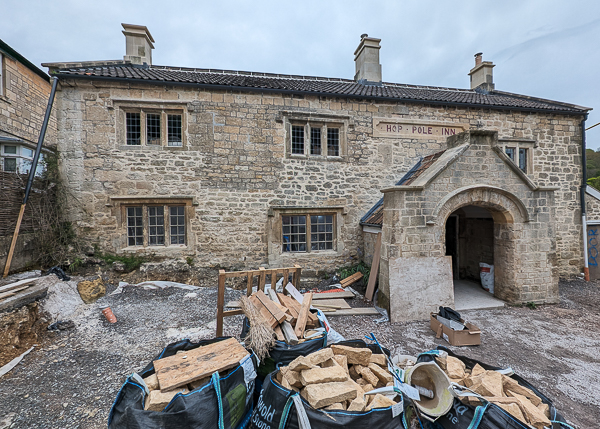
Hope Pole Inn © Hannah Bass
There's a wide porch, carved stone sign and windows with stone surrounds and hood mouldings – and it's a building site. The ground to the front has been levelled, there's temporary fencing separating the site from the road, and the noise of machinery coming from the rear garden.
The building probably dates from sometime during the 16th century, and has had many alterations to its plan and appearance, becoming a pub by at least 1841 and possibly earlier.
The pub has stood empty since 2018. The Community Benefit Society who now own the building are aiming to get the pub back into use, which means repairs, insulation to improve thermal performance and alterations. The hope is that the ground floor will be brought back into use as a pub, with accommodation on the first floor for a live-in landlord or lady.
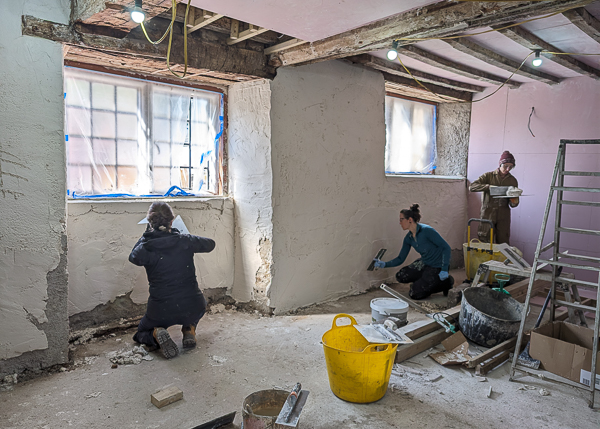
Scholars Jen, Hannah and Chloe applying insulated lime plaster © Hannah Bass
On site we met 2022 Fellow Daahir Mohamed, a plasterer specialising in lime plasters, to learn about the materials and techniques and have a go at using them ourselves. We spent the entire day here, using a couple of insulated lime plasters, as well as having a go with a few other plasters being used. I even tried plastering ceiling laths, which is as difficult as it sounds.
I also gave harling a go – it's a lot harder than it looks! After many, many attempts at chucking the plaster into the wall, and getting it on the floor, on me and pretty much everywhere except where it was meant to go, I finally picked it up.
I'm not sure it's something I'd be able to replicate again, and it's things like this that remind us how skilled the craftspeople are who carry out this work – it's not something you can learn in a day. But it does give you a good understanding of the materials and the skills needed to apply them.
I've learnt that when you're working with cow dung plaster you become a bit immune to the smell. And that cow dung plaster (cow dung and lime) is traditionally used to conceal soot stains on chimneys. It's being used at the Hop Pole to see how effective it is.
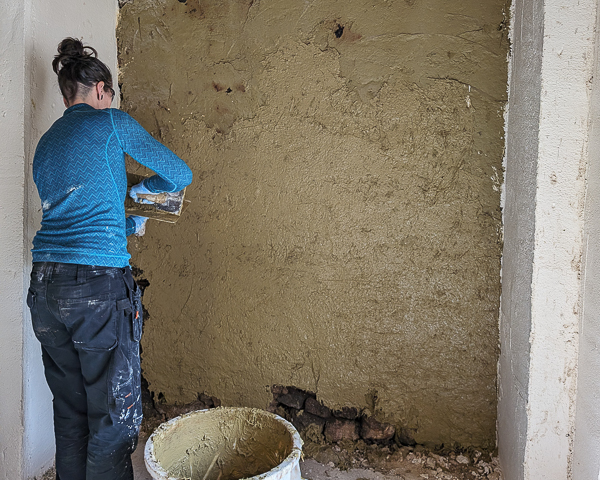
Scholar Jen Langfield applying cow dung plaster © Hannah Bass
Is the Scholarship how I expected it? Yes and no. I knew we'd get to see many different types of historic buildings and get some hands-on experience, but I didn't anticipate quite just how much I would learn in such a short space of time. And it's continuous, every day we see something new, or hear a different viewpoint. It's quite intense.
I was surprised at how quickly I've become used to staying in so many people's houses, most of whom we'd never met until we turned up at their doorstep with our sleeping bags. People have been so generous in providing places for us to stay.
In future when I'm specifying repairs, I think I'll be referring back to my sketchbook a lot. Within just the first two months we've accumulated so much information from the people we've met. It's going to be really valuable.
For anyone thinking about applying for the SPAB Scholarship, I'd say it's a great opportunity to try out lots of different building materials and to learn from people who are genuinely enthusiastic to share their knowledge of their crafts with you.
Sign up for our email newsletter
Get involved

